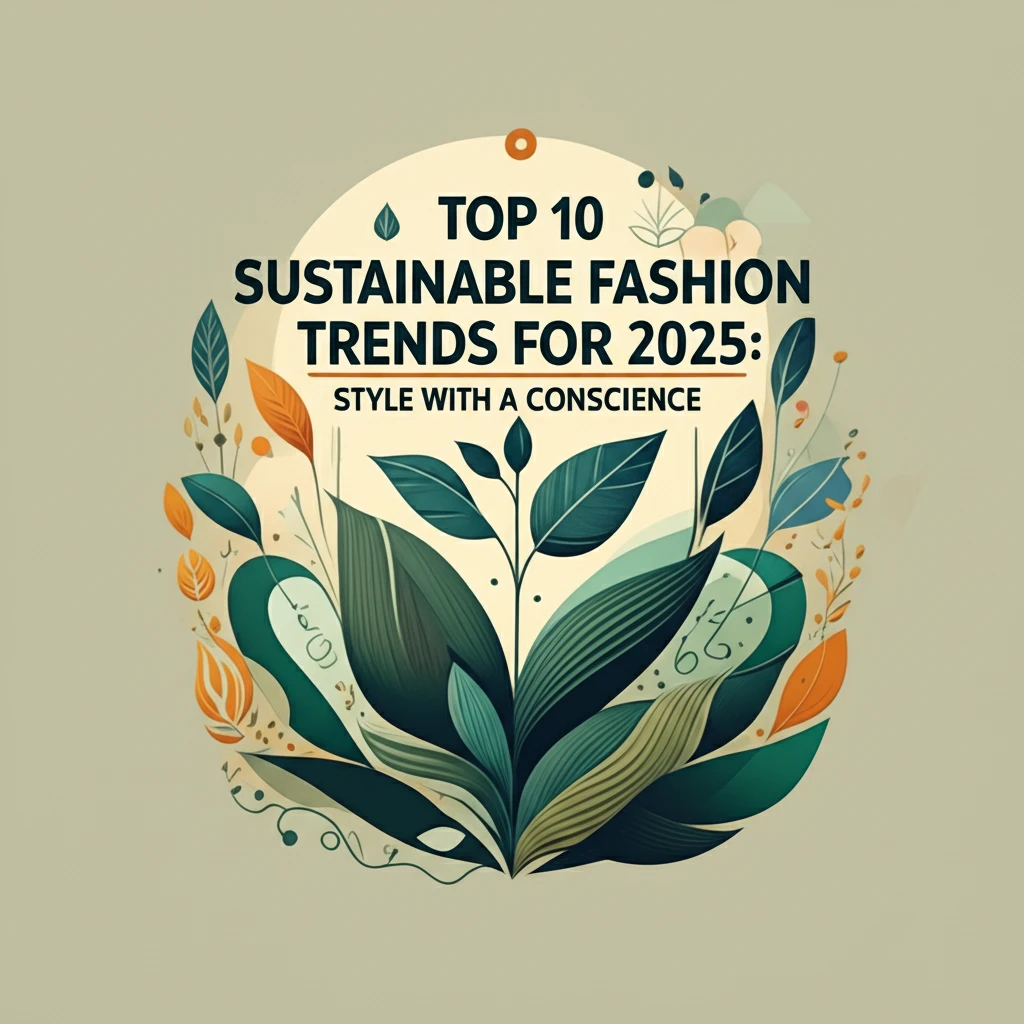Eco-Chic Future: Top 10 Sustainable Fashion Trends to Watch in 2025
Discover the top 10 sustainable fashion trends for 2025, from circular models and bio-based fabrics to digital fashion and fair labor practices. Learn how to embrace eco-chic style.

The fashion industry is undergoing a significant transformation, driven by a growing global awareness of environmental impact and ethical production. As we look towards 2025, sustainable fashion is no longer a niche concept but a mainstream movement. Consumers are increasingly demanding transparency, eco-friendly materials, and responsible practices from brands. This article dives into the top 10 sustainable fashion trends poised to dominate 2025, offering insights and practical tips on how you can embrace a more conscious and stylish wardrobe.
Circular fashion is all about keeping resources in use for as long as possible, extracting maximum value from them while in use, then recovering and regenerating products and materials at the end of each service life. In 2025, expect to see more brands implementing take-back programs, repair services, and initiatives for garment-to-garment recycling. This trend aims to minimize waste and move away from the traditional linear "take-make-dispose" model.
Look for brands offering recycling services for old clothes. Consider investing in pieces designed for longevity and easy repair.
Upcycling, the process of transforming discarded items into new products of higher quality or environmental value, will continue its ascent. From independent designers creating unique pieces from vintage textiles to major brands collaborating with artists on limited upcycled collections, creative repurposing will be a key differentiator. It's about giving new life to forgotten garments and reducing the demand for new production.
Explore local artisan markets for upcycled treasures or try your hand at DIY projects to revamp old clothes.
Beyond organic cotton and linen, 2025 will see a surge in innovative, naturally biodegradable materials. Think mushroom leather (Mylo), pineapple leaf fibers (Piñatex), seaweed-derived fabrics, and even lab-grown silks and wools. These materials offer sustainable alternatives to traditional resource-intensive options, breaking down harmlessly at the end of their life cycle.
When shopping, check labels for materials like Tencel, Lyocell, Hemp, Organic Cotton, and new bio-based alternatives.
Consumers want to know where their clothes come from, who made them, and under what conditions. Brands will increasingly leverage blockchain technology and comprehensive certifications to offer unprecedented transparency across their entire supply chain. This trend empowers consumers to make informed choices and holds brands accountable for their ethical and environmental claims.
Utilize apps and websites that rate brands on their sustainability practices. Don't hesitate to ask brands about their sourcing.
Extending the lifespan of garments is crucial for sustainability. The rental market for special occasion wear and everyday fashion, along with the thriving second-hand and consignment economy, will continue its rapid expansion. Platforms for peer-to-peer selling and renting will make sustainable consumption more accessible and stylish.
Explore clothing rental services for events or try selling/buying pre-loved items on platforms like Depop, ThredUp, or Vestiaire Collective.
Supporting local craftsmanship and reducing carbon emissions associated with long-distance shipping will be a priority. Expect to see a greater appreciation for fashion produced closer to home, often by artisans using traditional techniques. This not only supports local economies but also fosters unique, high-quality pieces with a story.
Seek out local designers and boutiques. Attend craft fairs to find unique, handmade items.
Textile dyeing is one of the most water-intensive and polluting processes in fashion. In 2025, we'll see wider adoption of innovative dyeing methods that significantly reduce water usage, such as air-dyeing, CO2 dyeing, and digital printing. Brands will also prioritize eco-friendly finishes that avoid harmful chemicals.
Look for brands that highlight their water-saving dyeing processes or use natural dyes.
Moving away from fast fashion's fleeting trends, 2025 embraces timeless, versatile, and modular designs. Garments designed to be mixed and matched, reversible, or even convertible (e.g., a jacket that transforms into a vest) promote longevity and reduce the need for excessive purchases. Quality over quantity is the mantra.
Invest in classic, high-quality pieces that can be styled in multiple ways and will last for years.
Fashion items are increasingly being designed with durability and repairability in mind. Brands are offering stronger stitching, higher-quality fabrics, and even free or affordable repair services to ensure their products stand the test of time. This challenges the disposable nature of fast fashion and encourages a long-term relationship with clothing.
Before buying, consider the garment's construction and material quality. Learn basic mending skills or find a good tailor.
While still emerging, digital fashion and augmented reality (AR) try-on experiences offer a fascinating sustainable path. By allowing consumers to "wear" clothes virtually or even purchase purely digital garments, it reduces physical production waste and offers a creative outlet without material consumption. It’s also a powerful tool for brands to gauge interest before mass production.
Explore virtual try-on features offered by some online retailers to reduce returns and impulsive buys.
The fashion industry is responsible for significant environmental damage, including massive water consumption, chemical pollution, and greenhouse gas emissions. It also faces ongoing scrutiny regarding labor practices and waste generation. Embracing sustainable fashion isn't just a trend; it's a critical shift towards a more responsible and equitable future for both people and the planet. By supporting sustainable practices, you contribute to preserving natural resources, reducing pollution, and promoting fair working conditions.
The year 2025 is set to be a landmark period for sustainable fashion, with innovation, transparency, and circularity leading the way. These 10 trends highlight a collective move towards a more conscious and responsible approach to dressing. By incorporating these principles into your wardrobe, you're not just following a trend; you're actively participating in creating a more sustainable and ethical future for the fashion industry and beyond. Let's make style synonymous with substance.